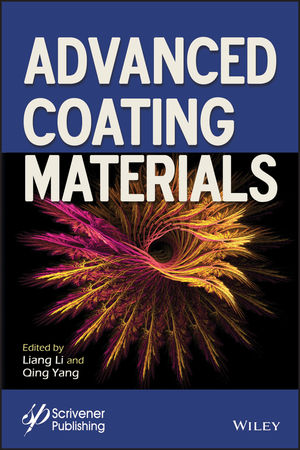Improving Powder Coating Aesthetics and Performance

New PTFE-Free Structuring Agent
In recent years, Clariant introduced Licocene®, a range of polyolefin waxes that act as dispersing and carrier agents for pre-mix formulations. Licocene grades are low-molecular-weight polyolefins, and are produced with the help of metallocene catalysts. This proprietary process makes it possible to produce custom-made solutions to meet specific industry requirements.
Now Clariant has introduced a new PTFE-free structuring agent. Licocene PE MA 4351 FG (Fine Grain) makes it possible to create powder coatings with unique structuring effects, matt finishes and exceptional edge covering for surface protection. Based on the company’s Metallocene Technology platform, this fine grain, maleic anhydride-modified PE wax additive offers a combination of benefits.
Tobias Niederleitner, Technical Marketing Manager at Clariant, explains, “Although initially the development was started to create an effective solution that does not rely on PTFE, which is currently in short supply, Licocene PE MA 4351 has brought a step-change in performance to the powder coatings market. From now on, coatings manufacturers no longer need to compromise on effects such as structured surfaces, degassing and adhesion improvement when developing high-performance powder coatings.”
Powder coatings are used extensively to coat metal in a wide range of end-user applications, from washing machines to bicycle frames. In order to do this, powder coatings formulators traditionally use PTFE to help create a structured surface that has good matting characteristics and avoids fingerprints.
A key benefit of Licocene PE MA 4351 is that, by adjusting the wax concentration, powder coatings producers can create different gloss and structuring properties. As a result, coatings that meet market preferences for structured, glossy surfaces or rough, textured surfaces with a no-fingerprint effect can be achieved.
Moreover, by improving the flow properties of a powder coating during curing, the wax additive eliminates the potential for bead formation along edges and lips of the metal component being coated. This allows the coating to flow smoothly over the edge for a consistent finish, helping to remove potential corrosion attack points and achieving a consistent finish. It should be noted that the Licocene PE MA structuring effect only works in combination with TiO2.
Clariant is currently introducing the new Licocene product around the world, and customers are in the process of sampling it in a number of applications. According to Niederleitner, the market has welcomed the fact that there is an alternative solution to using PTFE. “In addition, Licocene PE MA 4351 also opens up a number of new application opportunities. For instance, formulators can now also create a sandpaper-smooth modified surface – and some customers are already using it to improve flow properties.”
While there are a number of minor drawbacks (powder coatings will have to be reformulated, and there are some issues creating black powder coatings), the benefits are significant. Licocene PE MA 4351 can be used to make glossy, structured surfaces ‘glossier’ by adjusting the formulation, meeting a current market trend. And with better flow properties for improved edge covering, better coatings are now possible.
Ceridust®
In addition to Licocene PE MA 4351, Clariant also recently introduced wax additive Ceridust 6050 M, which represents a pioneering advance in surface adhesion without compromising high-level protection and/or aesthetics. The term Ceridust is used exclusively for micronized waxes which, due to a special process, take the form of extremely fine powder and are consequently very easily dispersible. The d50-value for this type of wax can be as low as 5 µm. This micronized polypropylene (PP) wax offers an unrivalled combination of effects for powder coatings due to the narrow molecular weight distribution, which is created by the metallocene technology.
Ceridust 6050 M delivers improved surface adhesion: silicone-based sealants remain permanently adhered to a powder coating with 2% Ceridust 6050 M. In addition to being able to apply silicon sealant permanently, Ceridust is also able to deliver better adhesion of overcoatings.
Ceridust 6050 M acts as a degassing agent in powder coatings, creating no pinholes (at 2%) and a consistent surface with better protection. The lack of pinholes improves surface appearance, and low gloss levels meet market trends for matt surfaces.
Sustainability
A key consideration today is minimizing the gap between ecology and economy by focusing on sustainability aspects such as the environmental, safety and health impacts of our activities at all life cycle stages, from the development of product concepts, to disposal and recycling.
Clariant applies its sustainable chemistry to create solutions that save money, improve products and the impact on the environment. Ceridust 7820 TP is one example – a renewable-based micronized wax with interesting properties for powder coating applications. Its combination of properties includes excellent degassing and almost no matting.
Niederleitner concludes, “We can expect yet more innovation both in the field of metallocene technology as well as in sustainability. The possibilities of the technology have not yet been exploited fully. There is plenty more innovation to come.”
Looking for a reprint of this article?
From high-res PDFs to custom plaques, order your copy today!









